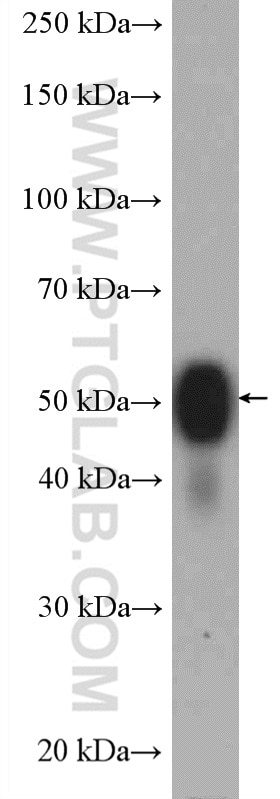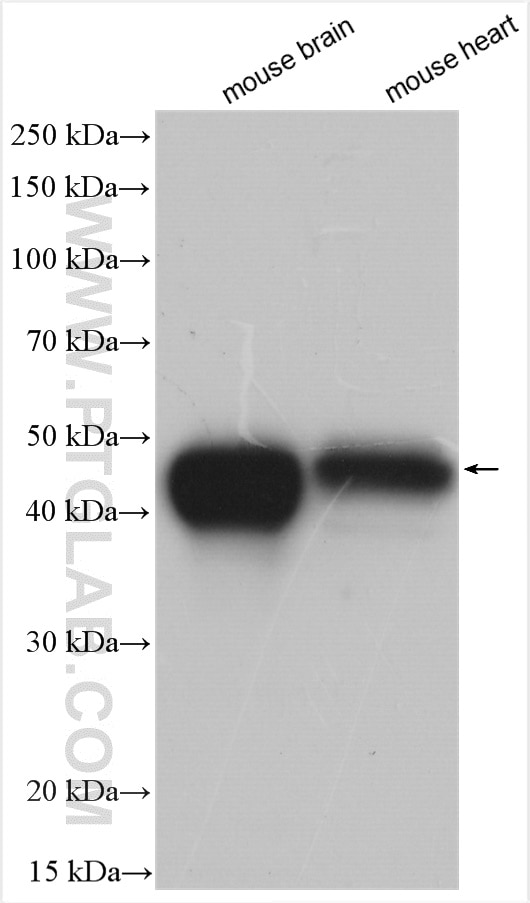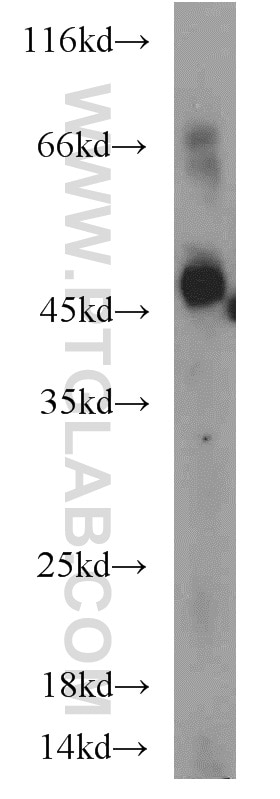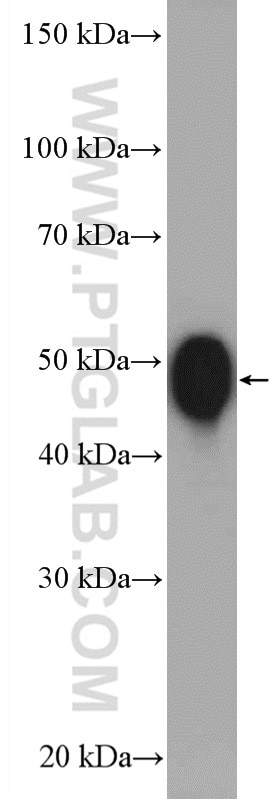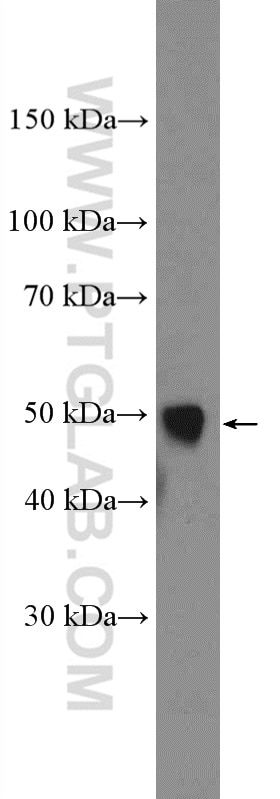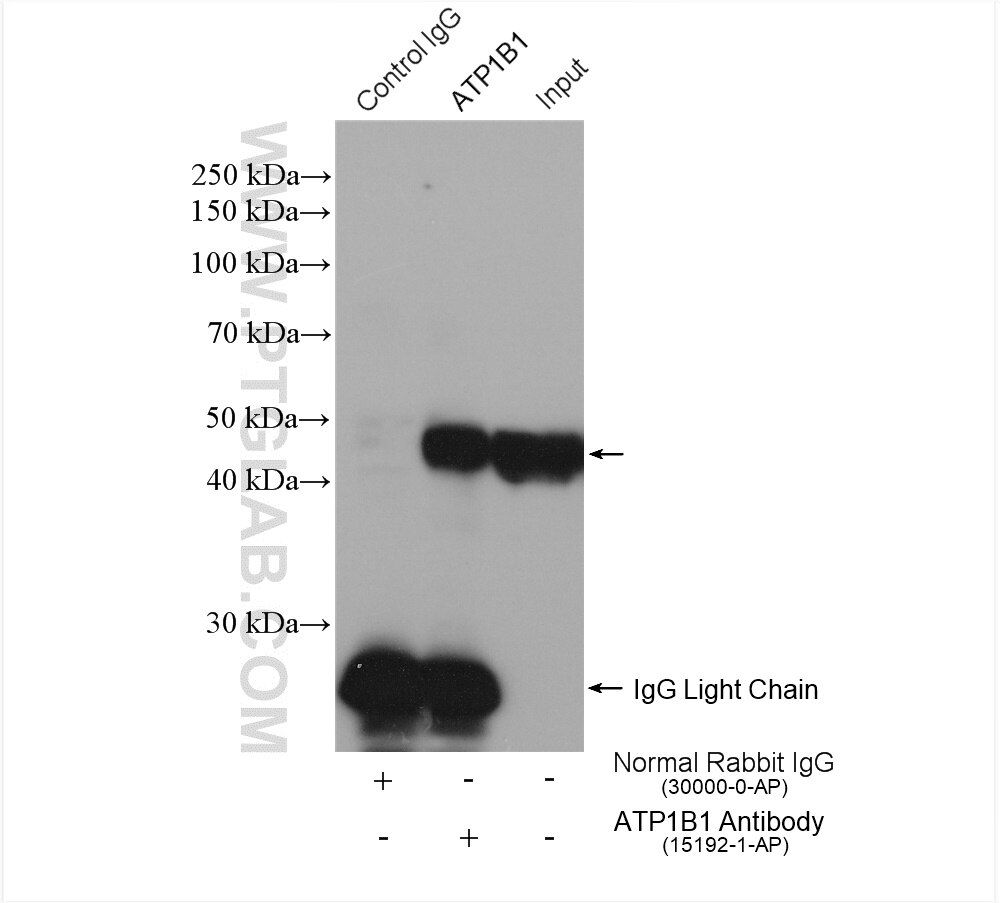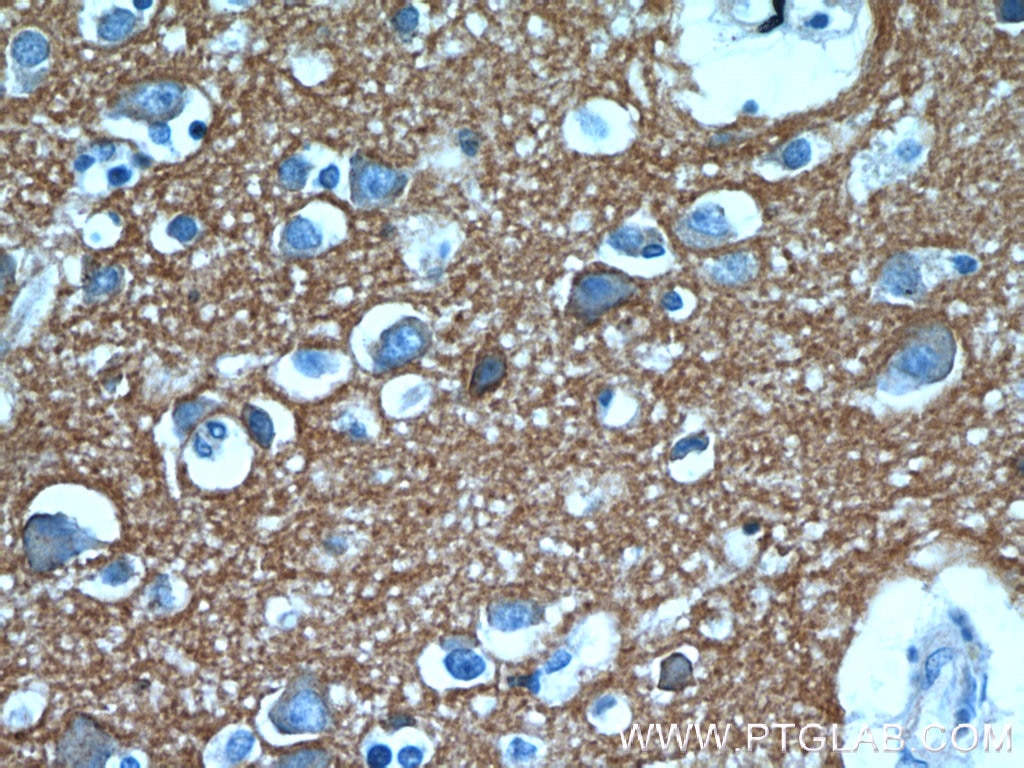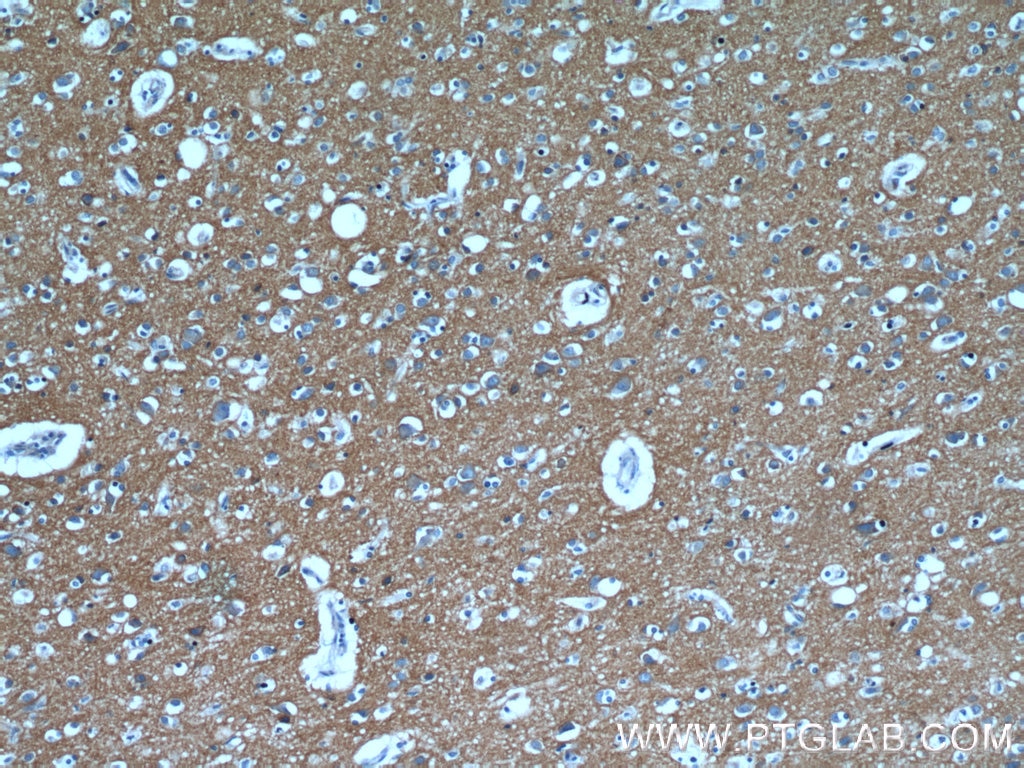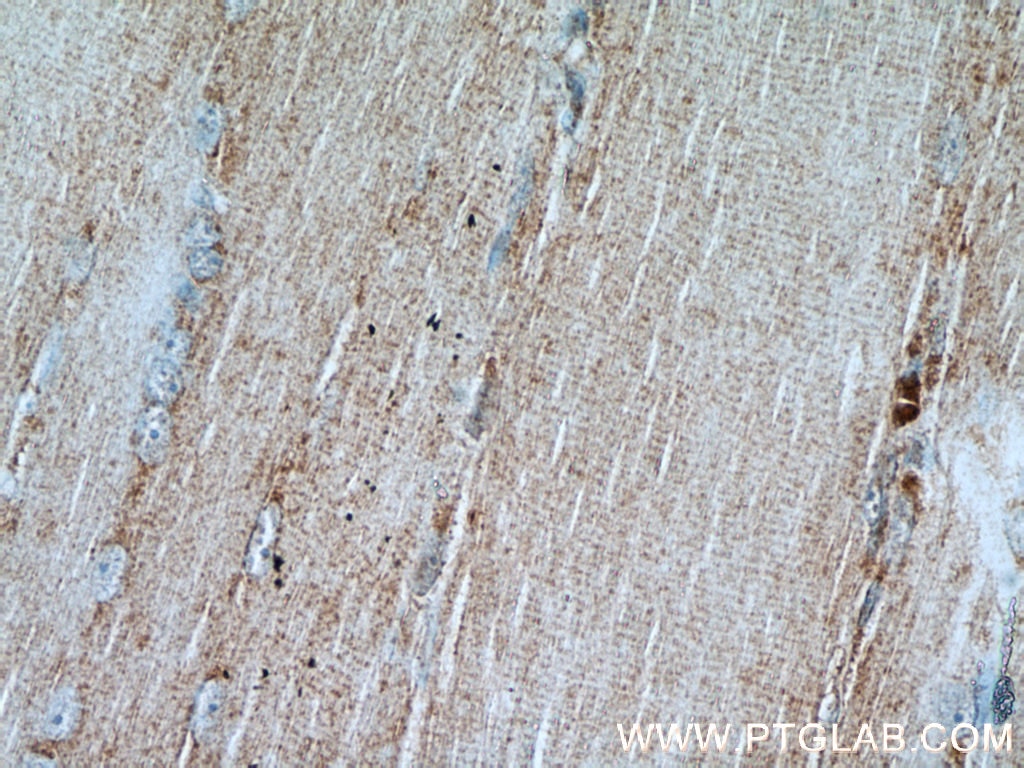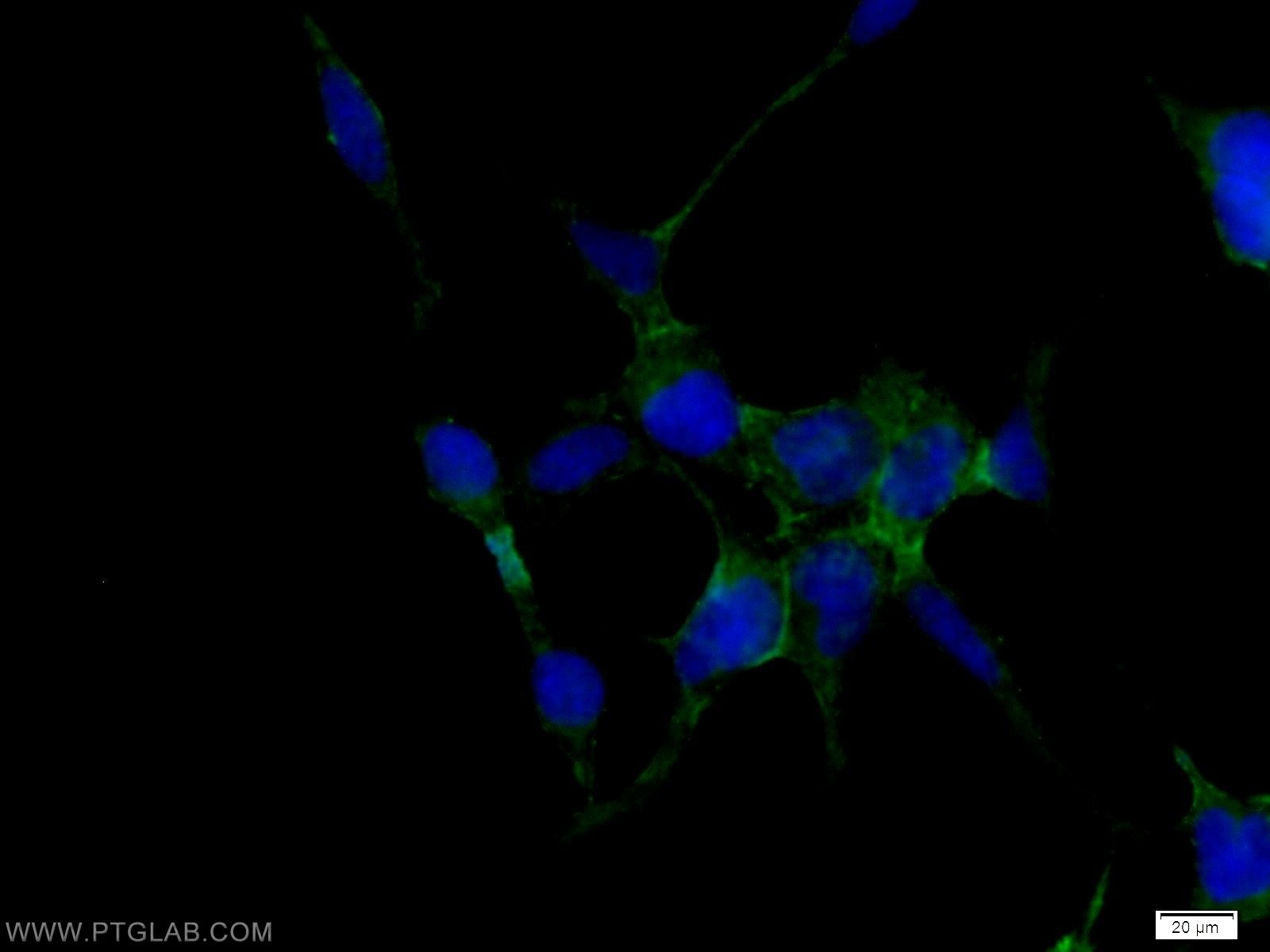Tested Applications
| Positive WB detected in | mouse brain tissue, human heart tissue, human brain tissue, mouse heart tissue |
| Positive IP detected in | mouse brain tissue |
| Positive IHC detected in | human brain tissue, human skeletal muscle tissue Note: suggested antigen retrieval with TE buffer pH 9.0; (*) Alternatively, antigen retrieval may be performed with citrate buffer pH 6.0 |
| Positive IF/ICC detected in | HEK-293 cells |
Recommended dilution
| Application | Dilution |
|---|---|
| Western Blot (WB) | WB : 1:1000-1:8000 |
| Immunoprecipitation (IP) | IP : 0.5-4.0 ug for 1.0-3.0 mg of total protein lysate |
| Immunohistochemistry (IHC) | IHC : 1:20-1:200 |
| Immunofluorescence (IF)/ICC | IF/ICC : 1:10-1:100 |
| It is recommended that this reagent should be titrated in each testing system to obtain optimal results. | |
| Sample-dependent, Check data in validation data gallery. | |
Published Applications
| WB | See 11 publications below |
| IHC | See 1 publications below |
| IF | See 2 publications below |
Product Information
15192-1-AP targets ATP1B1 in WB, IHC, IF/ICC, IP, ELISA applications and shows reactivity with human, mouse samples.
| Tested Reactivity | human, mouse |
| Cited Reactivity | human, mouse, rat |
| Host / Isotype | Rabbit / IgG |
| Class | Polyclonal |
| Type | Antibody |
| Immunogen | ATP1B1 fusion protein Ag7279 Predict reactive species |
| Full Name | ATPase, Na+/K+ transporting, beta 1 polypeptide |
| Calculated Molecular Weight | 35 kDa |
| Observed Molecular Weight | 45-52 kDa |
| GenBank Accession Number | BC000006 |
| Gene Symbol | ATP1B1 |
| Gene ID (NCBI) | 481 |
| RRID | AB_2290040 |
| Conjugate | Unconjugated |
| Form | Liquid |
| Purification Method | Antigen affinity purification |
| UNIPROT ID | P05026 |
| Storage Buffer | PBS with 0.02% sodium azide and 50% glycerol, pH 7.3. |
| Storage Conditions | Store at -20°C. Stable for one year after shipment. Aliquoting is unnecessary for -20oC storage. 20ul sizes contain 0.1% BSA. |
Background Information
ATP1B1 is one of beta subunits of the Na+/K+ ATPase and responsible for formation and structural integrity of the Na+/K+ ATPase. The Na+/K+ ATPase is a plasma membrane pump consisting of alpha, beta, and gamma subunits. At least four of Na+/K+-ATPase beta subunits (β1, β2, β3, β4) have been identified in mammalian cells; the β1-subunit (ATP1B1) is the most ubiquitous. The Na+/K+ ATPase β subunits have multiple N-glycosylation sites. The predicted MW of ATP1B1 is 35 kDa, while it migrates around 40-52 kDa due to the variable glycosylation. (PMID: 10896885, 17714085)
Protocols
| Product Specific Protocols | |
|---|---|
| WB protocol for ATP1B1 antibody 15192-1-AP | Download protocol |
| IHC protocol for ATP1B1 antibody 15192-1-AP | Download protocol |
| IF protocol for ATP1B1 antibody 15192-1-AP | Download protocol |
| IP protocol for ATP1B1 antibody 15192-1-AP | Download protocol |
| Standard Protocols | |
|---|---|
| Click here to view our Standard Protocols |
Publications
| Species | Application | Title |
|---|---|---|
J Immunol Inducible ATP1B1 Upregulates Antiviral Innate Immune Responses by the Ubiquitination of TRAF3 and TRAF6. | ||
Front Pharmacol High-Salt Attenuates the Efficacy of Dapagliflozin in Tubular Protection by Impairing Fatty Acid Metabolism in Diabetic Kidney Disease | ||
Int J Mol Sci RBM20 Regulates CaV1.2 Surface Expression by Promoting Exon 9* Inclusion of CACNA1C in Neonatal Rat Cardiomyocytes. | ||
Obesity (Silver Spring) 27-Hydroxycholesterol Inhibits Sterol Regulatory Element-Binding Protein 1 Activation and Hepatic Lipid Accumulation in Mice. | ||
Exp Eye Res Pathomechanism of mutated and secreted retinoschisin in X-linked juvenile retinoschisis. |
